A needle and thread. Glass beads. Canvas. A whole lot of time. These are the tools and materials New Orleans-based artist Demond Melancon uses to create his Black Masking suits and his contemporary art portraiture series. For the past five years or so, Melancon has been building on his practice, but his story starts much earlier – 20 years ago to be exact. CERF+, a mutual aid safety net for artists, introduced us to Melancon recently, and we jumped at the chance to learn more about him, his work and his ambitions.
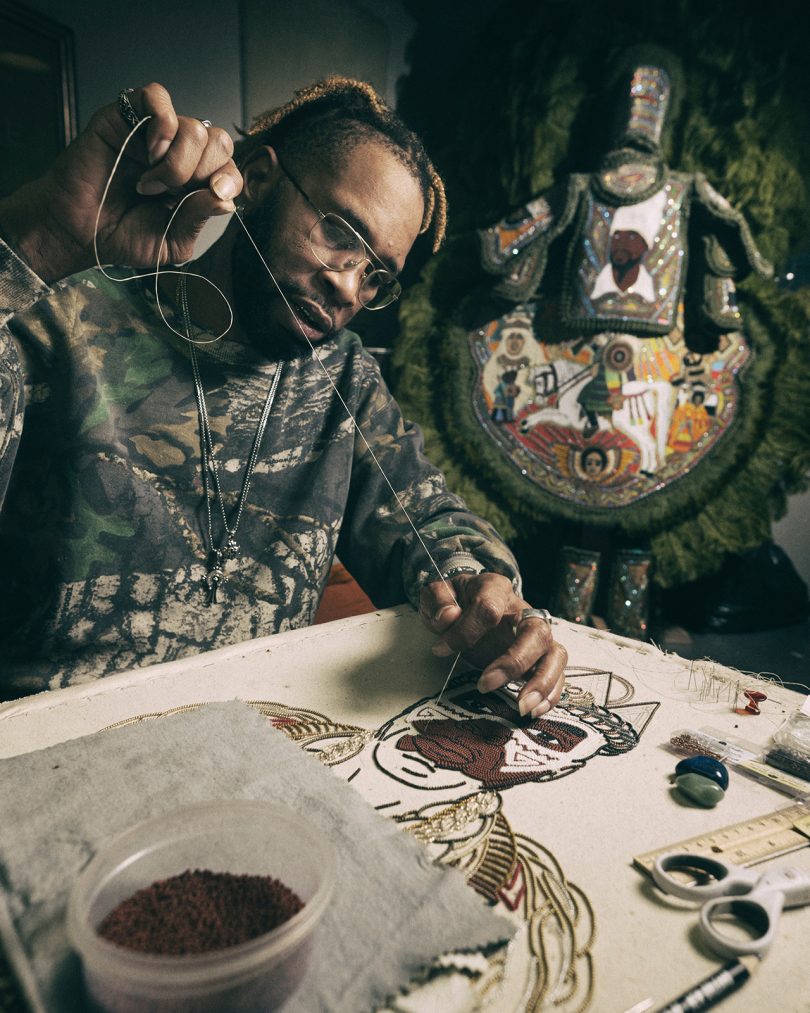
Demond Melancon in his studio, 2021 \\\ Photo: Giles Clement
It was 1992 when Melancon first became part of the 200+ year old culture known as the Black Masking Culture of New Orleans. His mother had taken him to see indigenous Black Indians and everything “just clicked,” he said. A few years later, when he was in junior high school, Melancon’s friends brought him further into the fold. “It was St. Joseph’s night, that’s when the Indians put on their suits at night. I went with my friends to their houses, and my one friend had a suit and that just blew my mind. And that’s how I became an Indian. That’s how it started, right there. And it just kept branching out until I got to Ferdinand Bigard.”
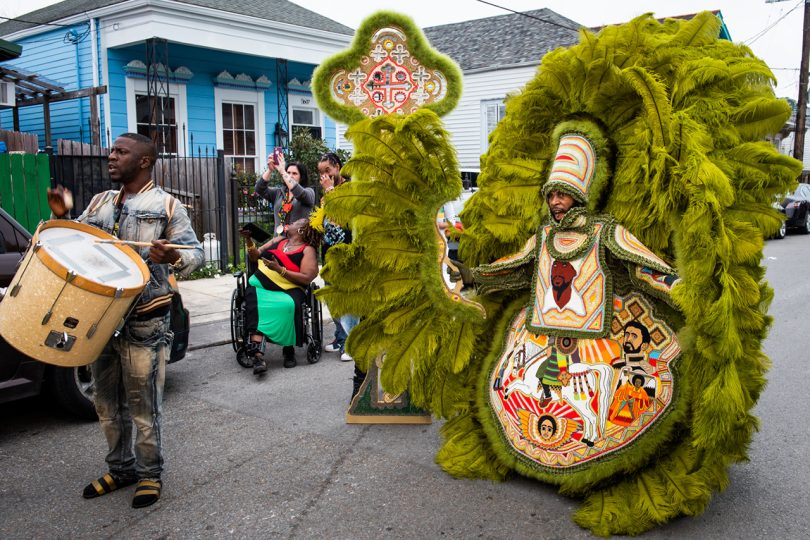
Jah Defender, Demond Melancon, 2020 \\\ Photo: Ryan Hodgson-Rigsbe
Melancon had the opportunity to learn from several influential Big Chiefs, not only about sewing but about the history and traditions of the Black Masking Culture of New Orleans as well. However, it was Big Chief Ferdinand Bigard who took him under his wing, teaching him how to actually put the beads down on the canvas. Bigard told him that earlier Black Masters used fish scales, bottle caps, their mom’s brooches – whatever they could find – to make their suits. Melancon then went on to study under the revered Nathanial Williams, thanks to a 1993 Louisiana Folklife Apprenticeship Grant, and formed a close relationship with him before joining the Seminole Hunters tribe.
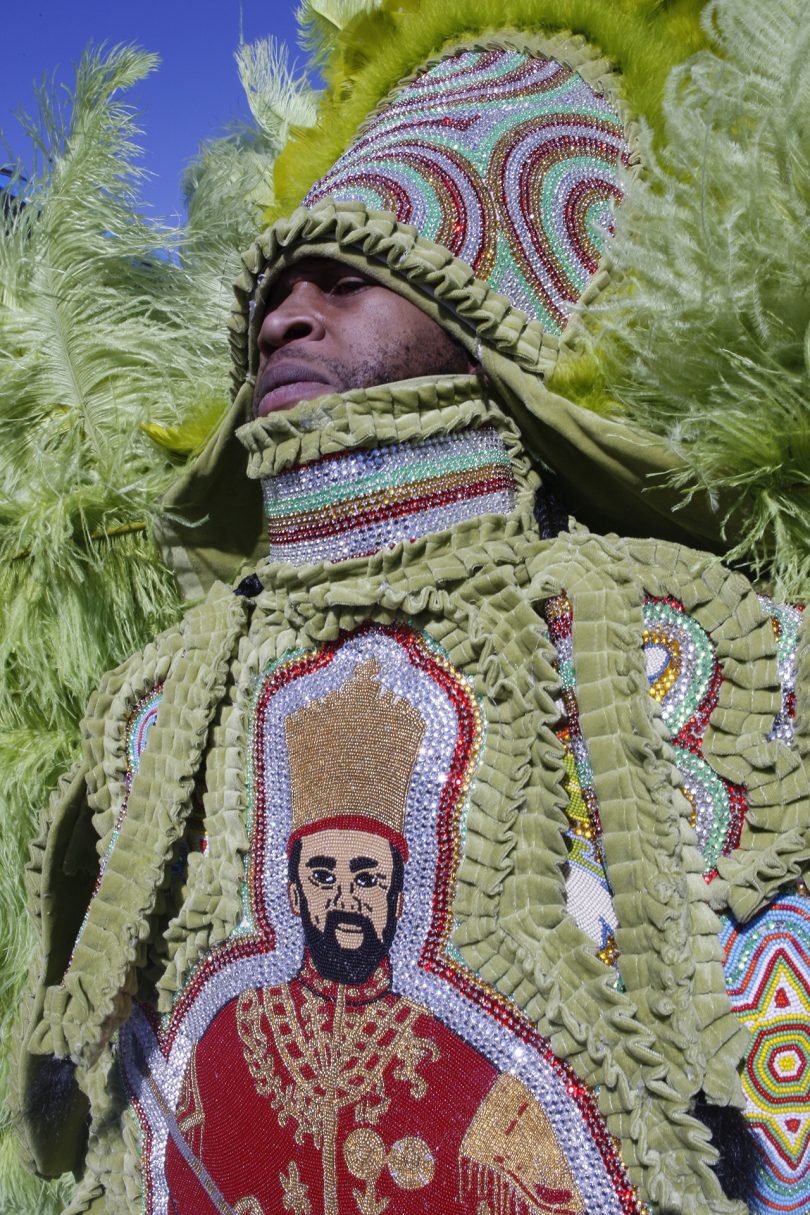
Haile Selassie, Demond Melancon, 2010 \\\ Photo: Christopher Porché West
Prior to becoming the Big Chief of his very own tribe, Melancon became well-known as a fierce Spy Boy for the Seminole Hunters under Big Chief Keitoe Jones. “I was a spy boy for years upon years on top of years,” he shared. “He’s the gang leader, he runs the front of the tribe and gets all the signals back to the Chief to let him know what’s going on,” Melancon said. “I just beaded and made suits as a spy boy. I adapted to his (Williams) attitude and was revered in the city by all of the other Indians that I was the Spy Boy of the Nation. To this day, I don’t think anyone’s doing it like that,” he laughed.
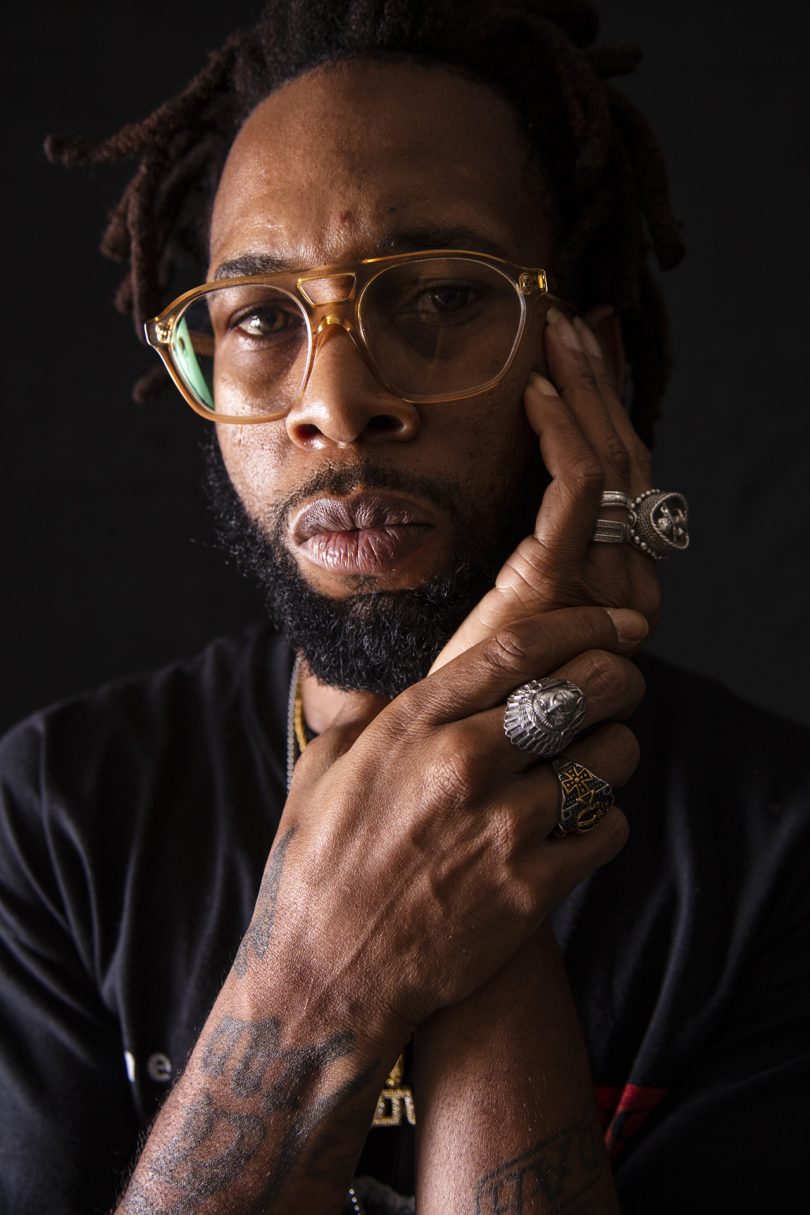
Photo: Cedric Angeles
In 2012, the elders of the Black Masking community declared that Melancon would then be known as Big Chief Demond Melancon of the Young Seminole Hunters, his very own tribe based in the Lower Ninth Ward of New Orleans where he grew up.
Big Chief Melancon is well-known for his meticulous hand-sewn beadwork, use of very small beads and attention to detail. The massive suits he creates, and wears as a Black Master in ceremonial battles on Mardi Gras day, are sculptural forms based on his own body. Combining opaque, transparent, matte and metallic beads on intricate patches creates a broad spectrum of color and depth that ultimately reveals a visual narrative. After the patches are stitched together, the suit is covered in colorful ostrich plumes as the final touch.
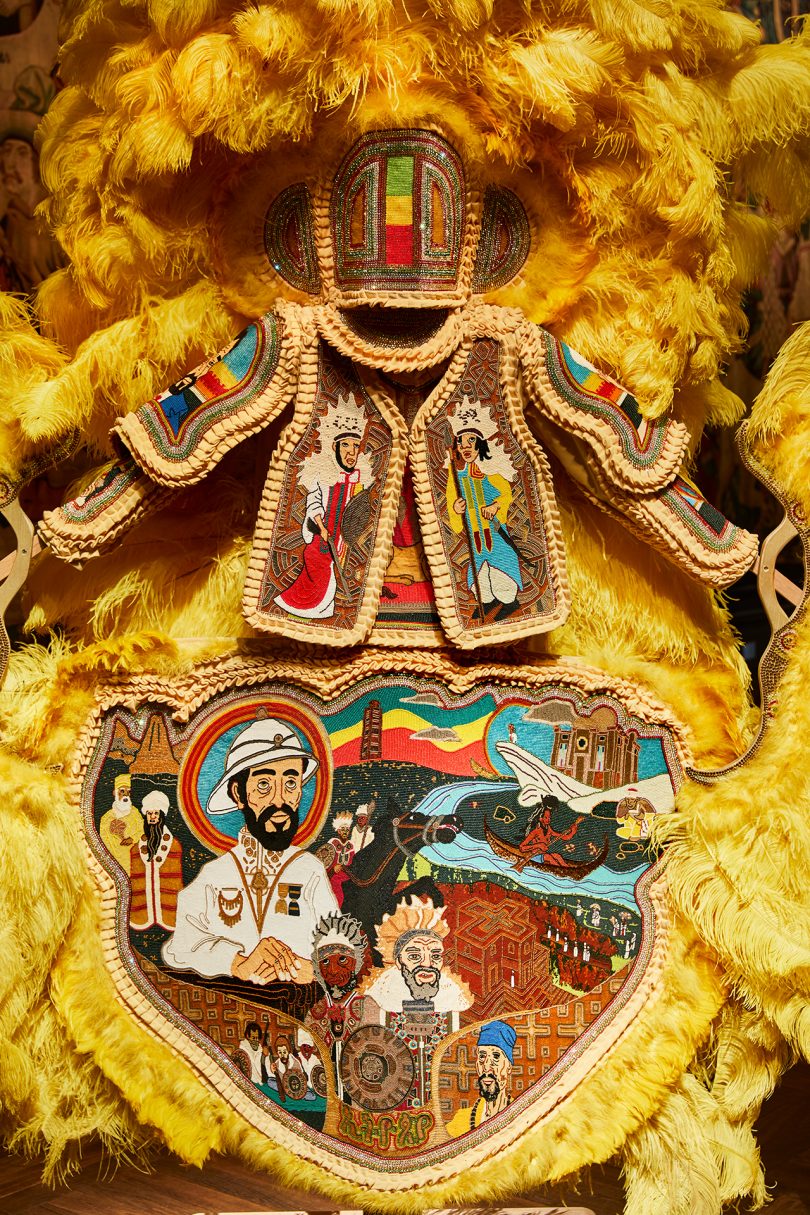
Ethiopia, Demond Melancon, 2018. Picture of Demond’s suit on display at the V&A for the 2019 London Design Festival installation entitled Black Masking Culture. \\\ Photo courtesy of the Victoria & Albert Museum
“I use progressive lenses and it’s like a magnifier right on my face, I just lock in and have a lot of light,” he says of his process. “I like to do big pieces and have my space, play my music loud. I like to listen to podcasts and art interviews, or I’m listening to my reggae music. That’s all I listen to while I’m doing the actual beadwork, reggae music and lot of times jazz, old school jazz like Thelonious Monk.”
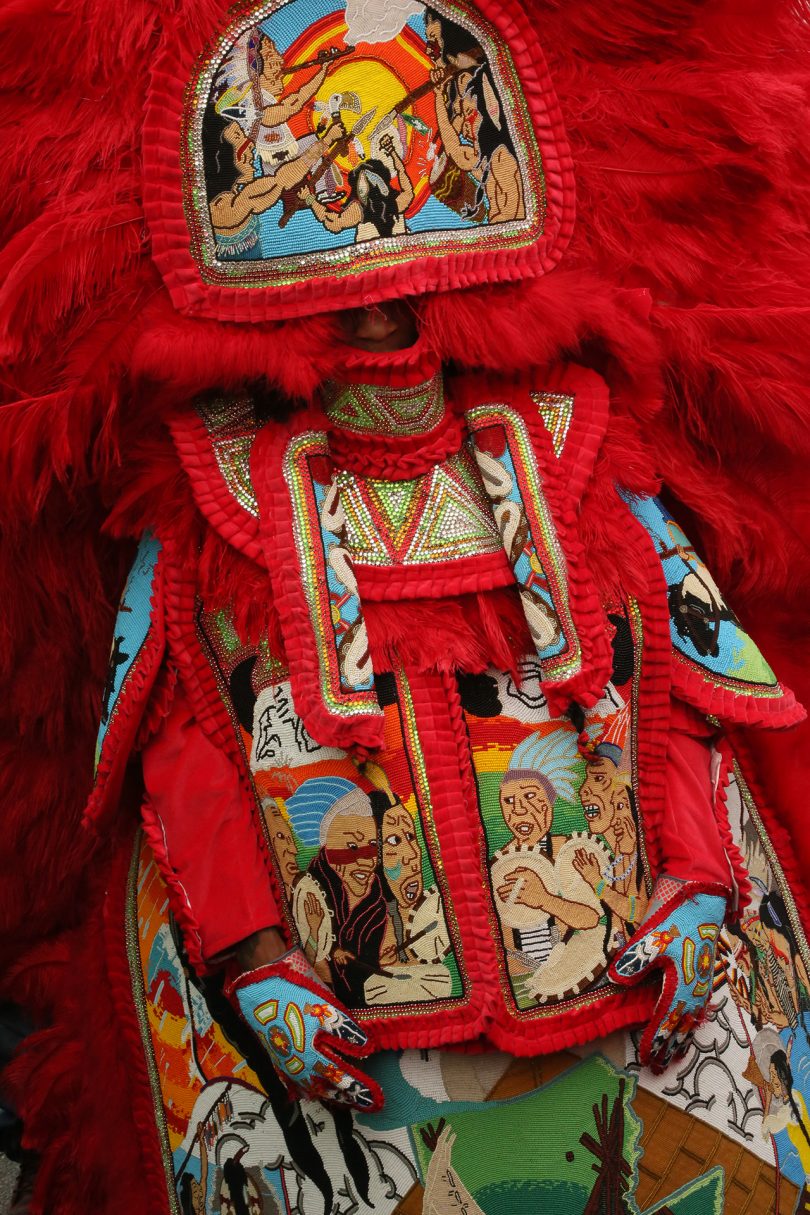
Red Cloud and Sitting Bull, Demond Melancon, 2013 \\\ Photo: Christopher Porché West
Melancon’s Black Masking suits are massive and technically difficult to create. His main aprons – the large part of a suit between the waist and the ankles – often measure over 50-inches wide. Melancon uses smaller bead sizes than most Black Maskers to create his aprons: 11/0s that measure in at 2.1mm each. The size of each suit, weighing around 100lbs and stitched with one million minuscule beads, translates to upward of 4,000 hours of sewing. Big Chief Demond will wear his finished suit only a few times during the year – Mardi Gras Day, St. Joseph’s Night and Downtown Super Sunday – before he retires it and starts making the next one.
And what happens to Melancon’s suits afterward? “Some suits that were important in the historical narrative in New Orleans are at the Arthur Roger Gallery. Some of the other pieces were so big that I took the aprons off and put them in frames, some of them are hanging in my studio. One is supposed to be auctioned at Sotheby’s this October.”
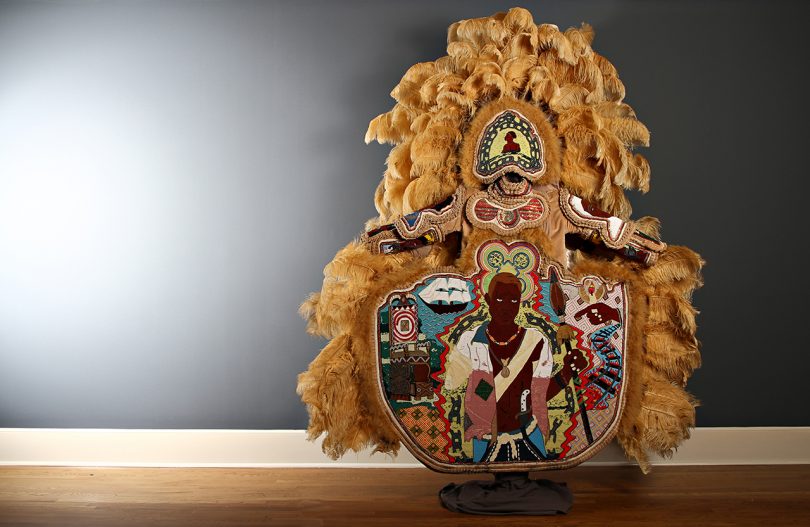
Bras-Coupé, Demond Melancon, 2016
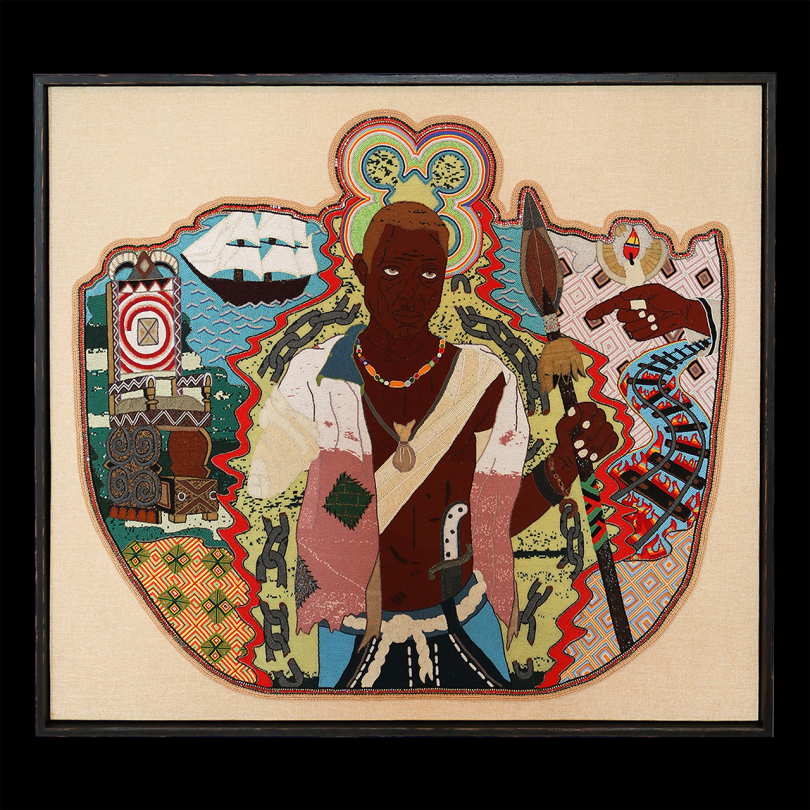
Bras-Coupé, Demond Melancon, 2016
There’s also the hope of one day having a studio outside of his home. “I live with all my work. My suits, the pieces that I draw to start on next, new pieces – I do everything in my home studio,” he said, as he shared his dream. Melancon is usually at work on more than one piece at a time, right now five large pieces are spread around his studio as he works on an upcoming show in October. It’s easy to understand how and why space is at a premium.

Ethiopia, Demond Melancon, 2018. Picture of Demond’s suit on display at the V&A for the 2019 London Design Festival installation entitled Black Masking Culture. \\\ Photo courtesy of the Victoria & Albert Museum
Demond Melancon’s work hones in on influences with symbolism and meaning, while also confronting stereotypical representations of Black identity. With a deep interest in visual storytelling and portraiture, he pushes the use of glass beads as a contemporary art medium to the larger art sector while repositioning historically overlooked subjects and reimagining the portrayal of the Black subject.
“I study all the old works and I love paintings. I don’t know how to paint, but I paint with the beads.” From contemporary artists like Kerry James Marshall, Barkley Hendricks and Basquiat, to Renaissance artists such as Caravaggio and Botticelli, Melancon finds something special within the works of them all.
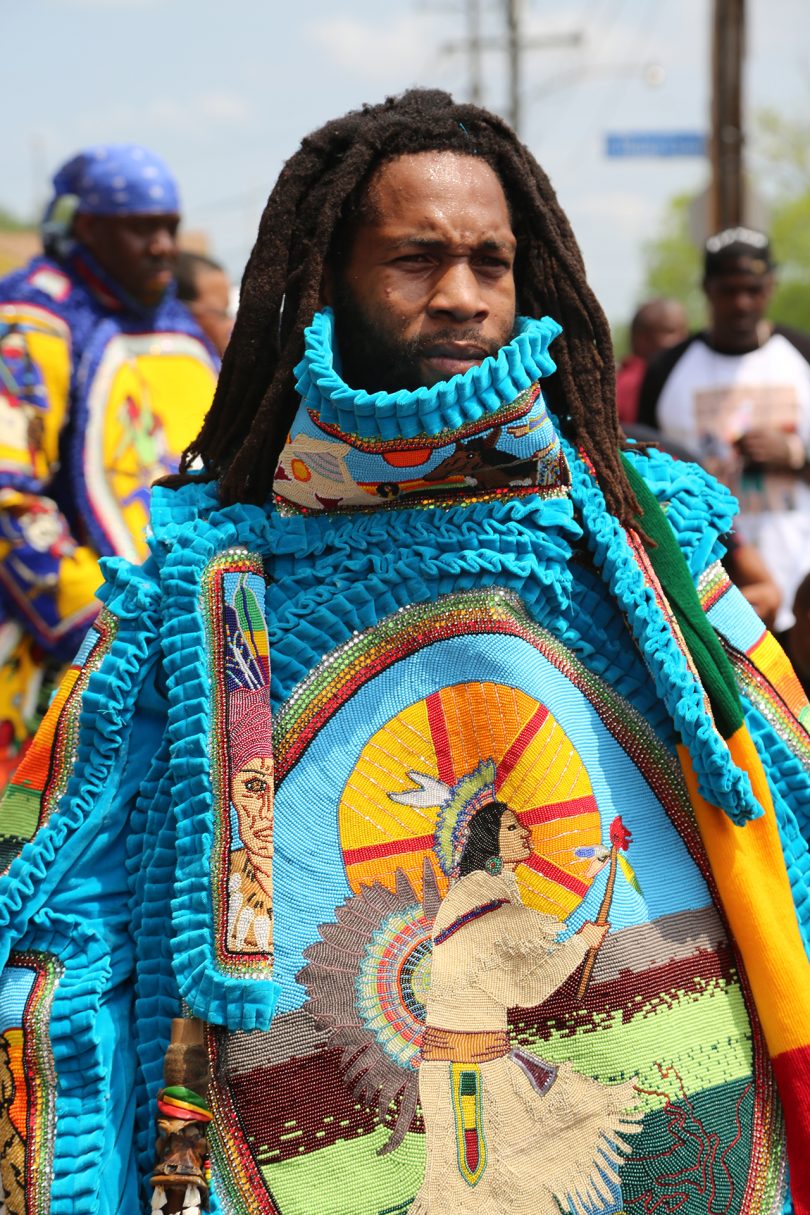
Spirit of Red Cloud, Demond Melancon, 2014 \\\ Photo: Christopher Porché West
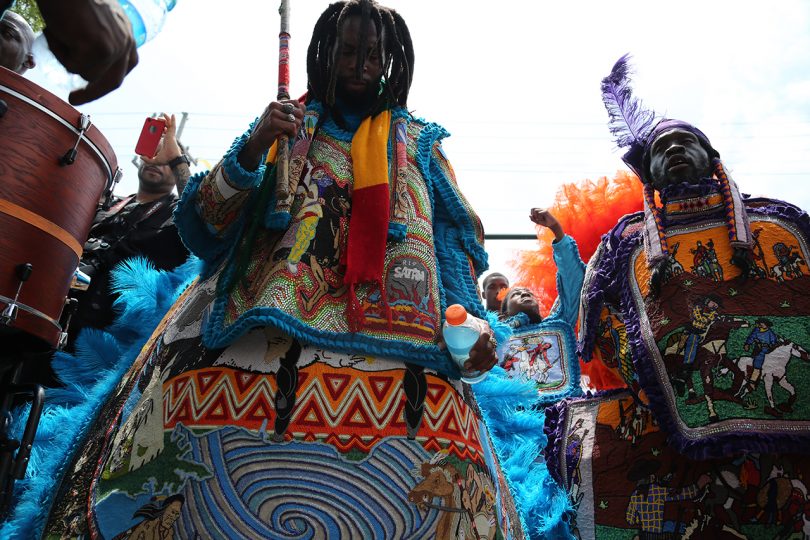
Spirit of Red Cloud, Demond Melancon, 2014 \\\ Photo: Christopher Porché West
“I do it to inspire people, especially peers in my culture, to be better than what they think we’re supposed to be like. In New Orleans, in the culture, you’re not considered an artist. I branched out to show them that beading can be contemporary art, can be fine art. That’s what I stand on and that’s what I fight for.”
Aside from being Big Chief, Melancon is also one of the founding teachers of the Material Institute in New Orleans where he teaches beading classes there. He also, of course, teaches his craft to the youth in his own tribe.
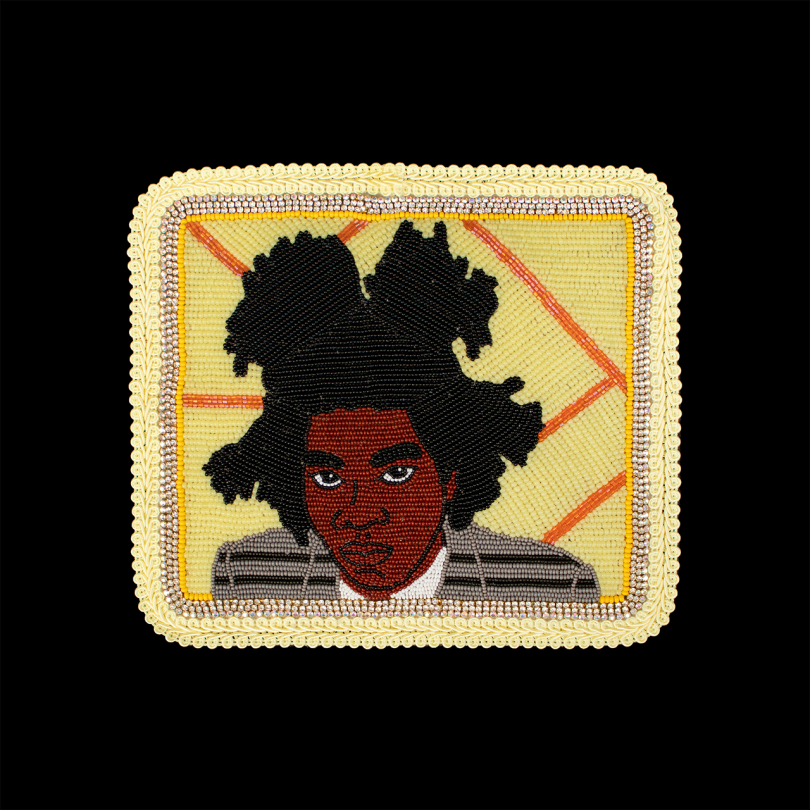
Most Kings Get Their Heads Cut Off, Demond Melancon, 2021
“Right now my every stitch is about getting my work to a larger group of people. Getting the work to travel to see different places. It’s a beautiful art scene all over, art is different all over. Most times, when people first see my work, they think it’s paintings. Then they learn they’re beads and they go crazy,” he said.
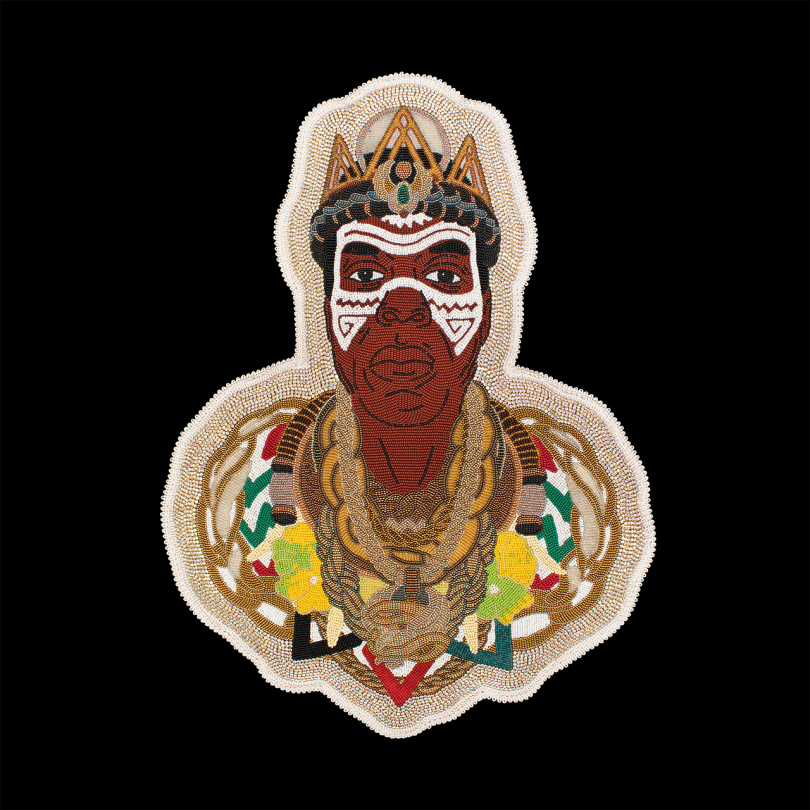
The Future and Now, Demond Melancon, 2021
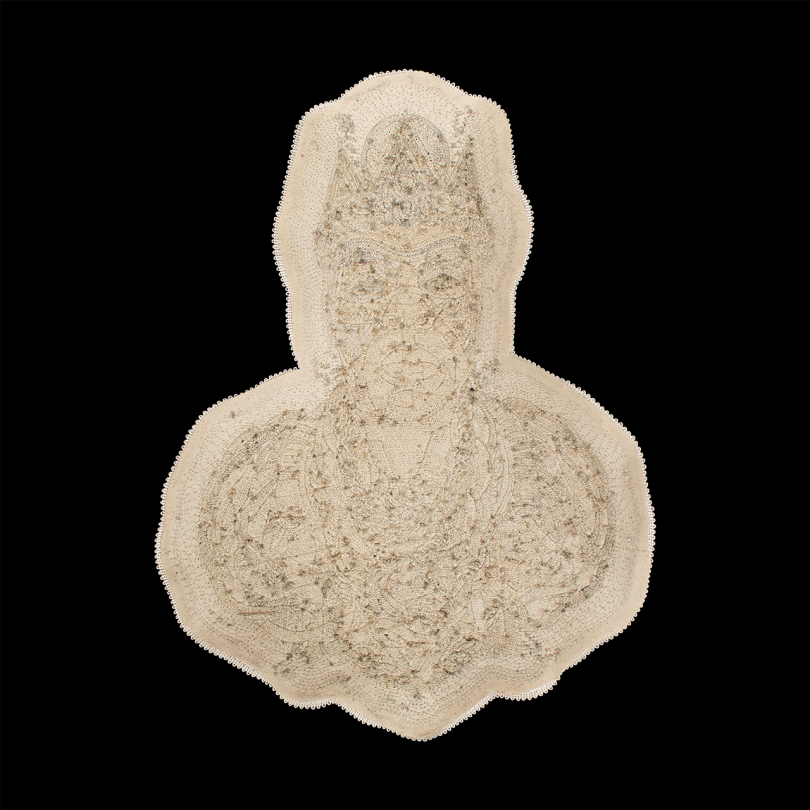
The Future and Now, Demond Melancon, 2021 (Verso)
“I’m hoping one day I can get people to see my work through a lens that will get me in different places. I did a piece that’s almost life-sized, I did Moses Isaac Hayes. It’s almost 6 ft tall and I did it in a year. You can see it at Central Station Hotel in Memphis, Tennessee. I’ve done pieces for Barkley Hendricks’ wife. I just did a piece called “Lunch with Picasso”, and that was one of Hendrick’s’s paintings. I’m working on some others from Fela Kuti. A big piece called “The Amistad Takeover”, where I have the slaves getting on the ship to go back to Africa. I think my work needs to be seen in other art worlds.” We couldn’t agree more.
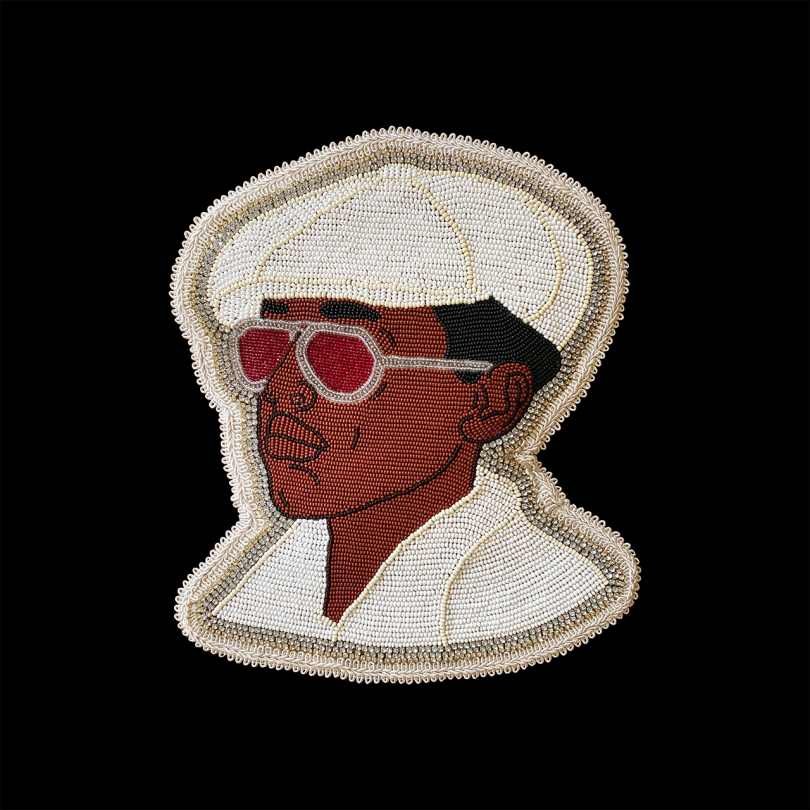
What’s Still Going On, Demond Melancon, 2020
Demond Melancon’s work has been exhibited at the Victoria & Albert Museum in London, Art Miami, the Museum of Contemporary African Diasporan Art in Brooklyn and the Arthur Roger Gallery in New Orleans.
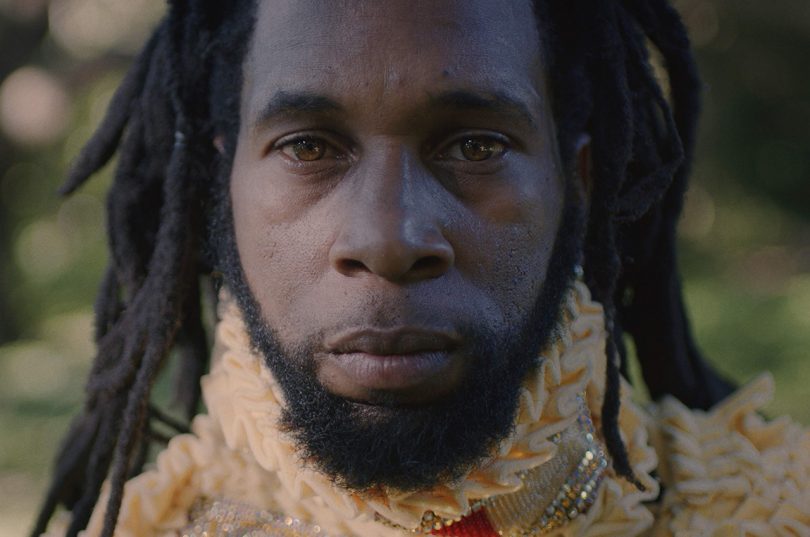
Demond Melancon documentary production still, 2018 \\\ Photo: Gabriel Bienczyck
CERF+ was started by artists for artists in the craft community as a grassroots mutual aid effort in 1985. CERF+ serves artists who work in craft disciplines by providing a safety net to support strong and sustainable careers. Their core services are education programs, advocacy, network building and emergency relief.
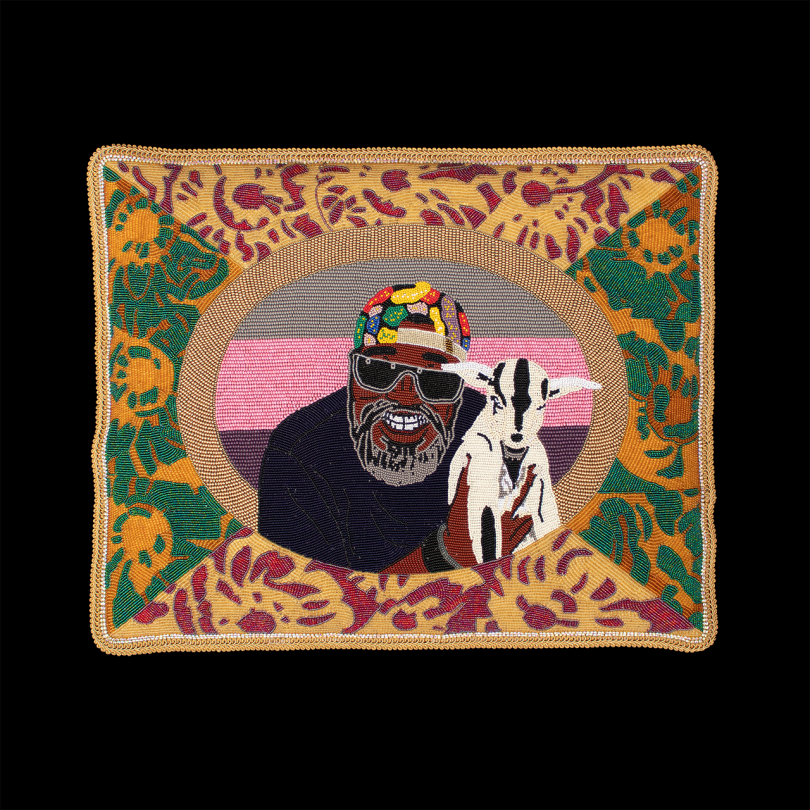
Lunch with Picasso, Demond Melancon, 2021

Kelly Beall is senior editor at Design Milk. The Pittsburgh-based graphic designer and writer has had a deep love of art and design for as long as she can remember, and enjoys sharing her finds with others. When undistracted by great art and design, she can be found making a mess in the kitchen, consuming as much information as possible, or on the couch with her three pets. Find her @designcrush on social.
You can follow Kelly Beall on Twitter, Facebook, Pinterest, and Instagram. Read all of Kelly Beall’s posts.
